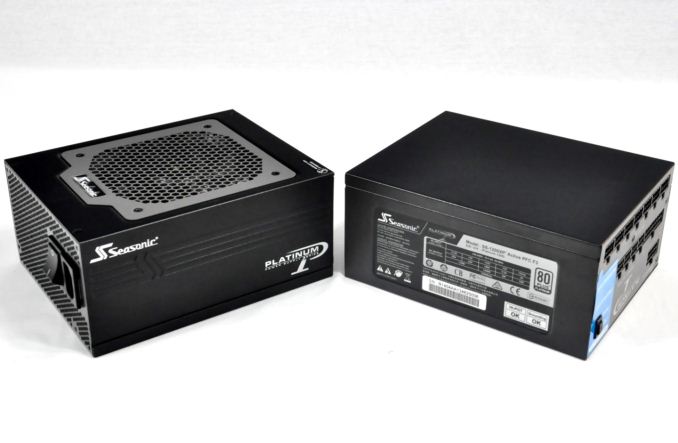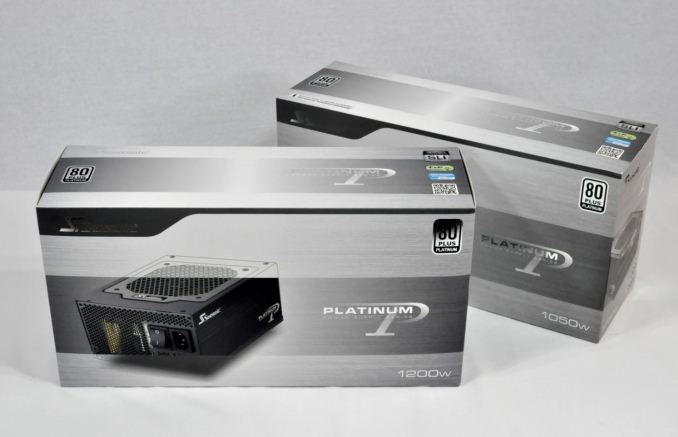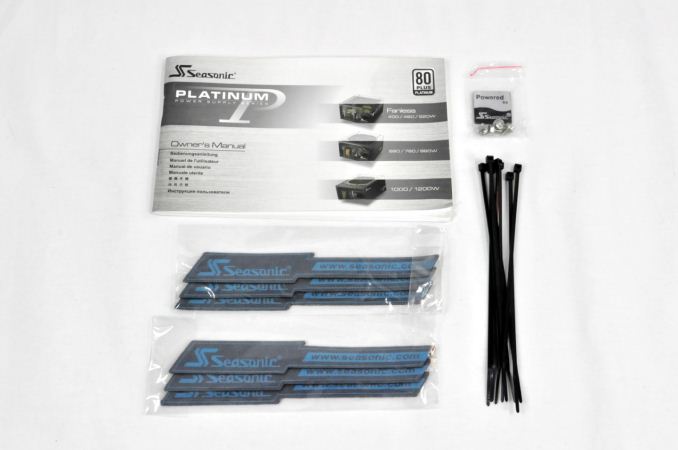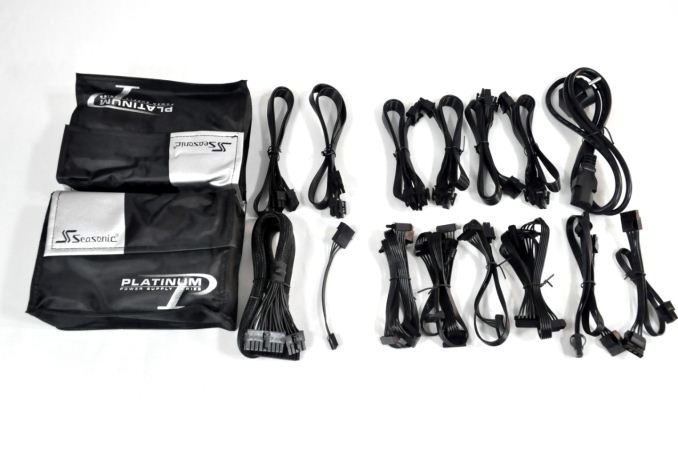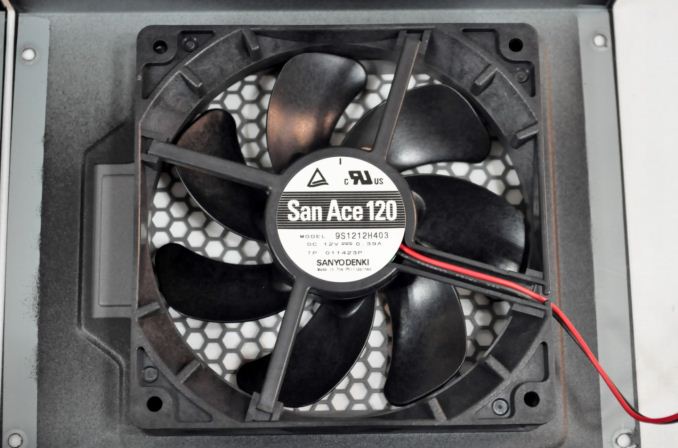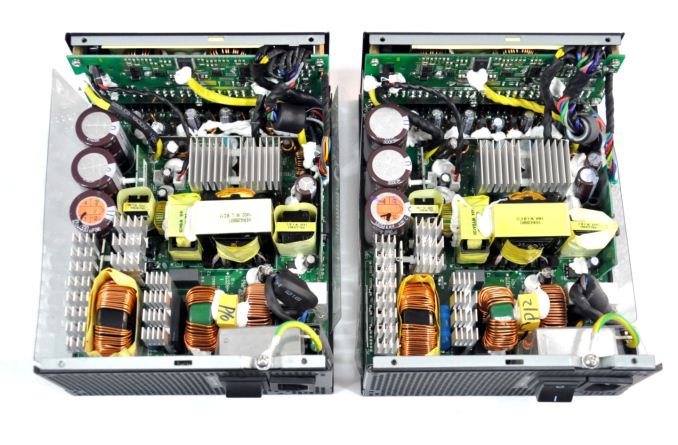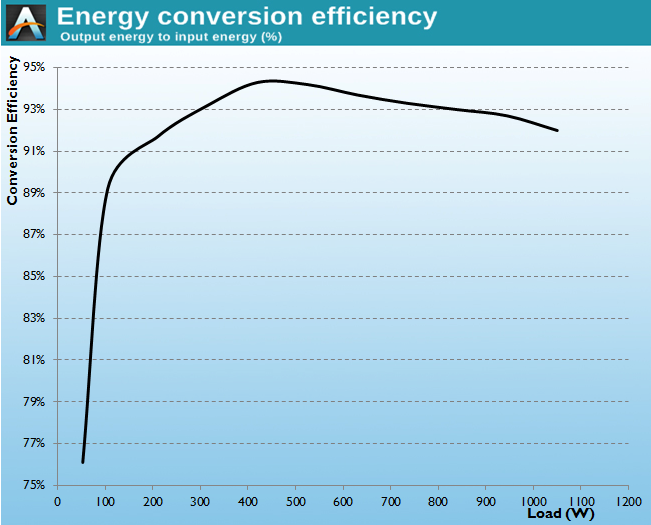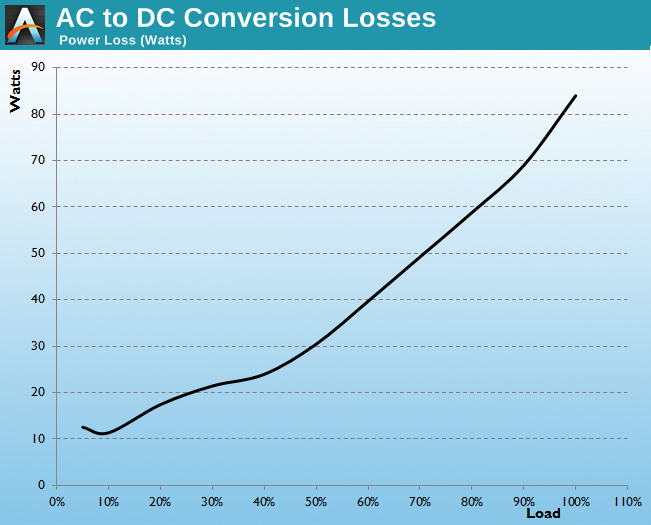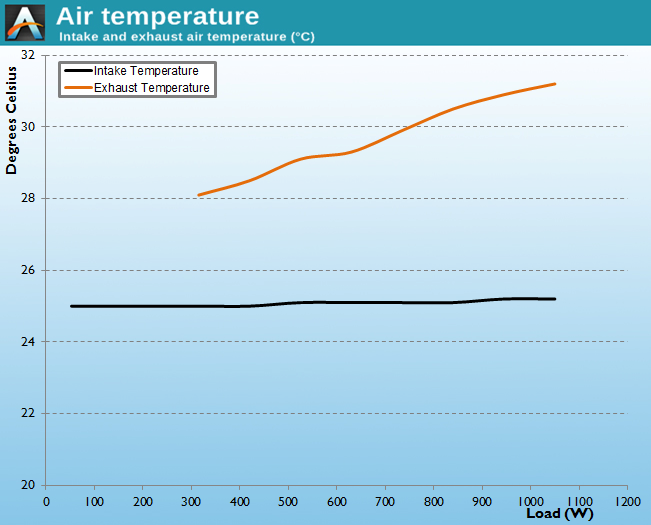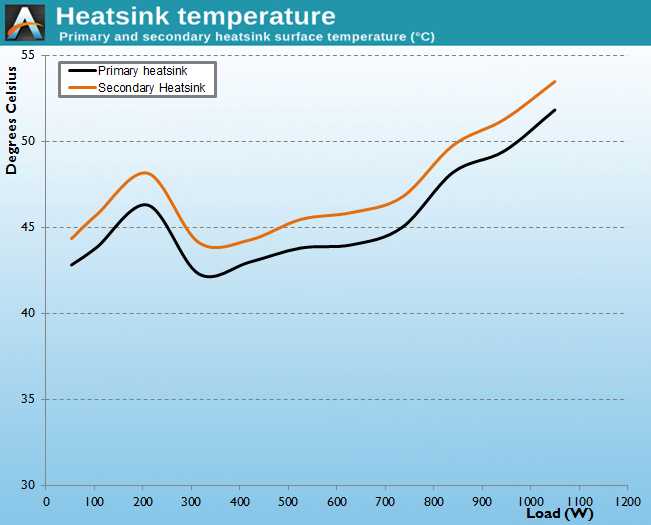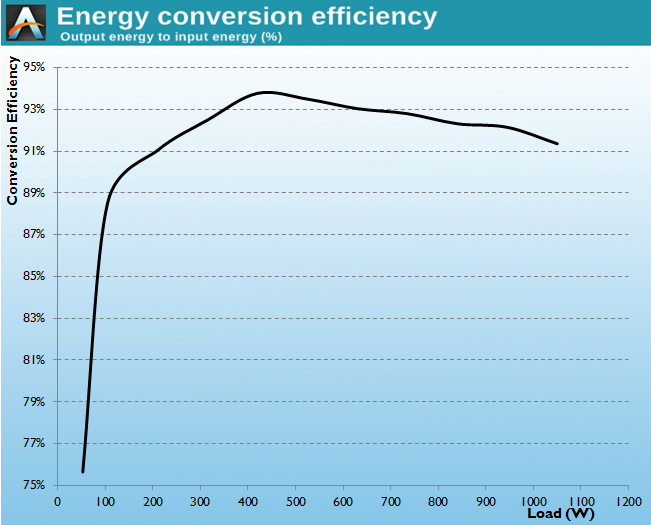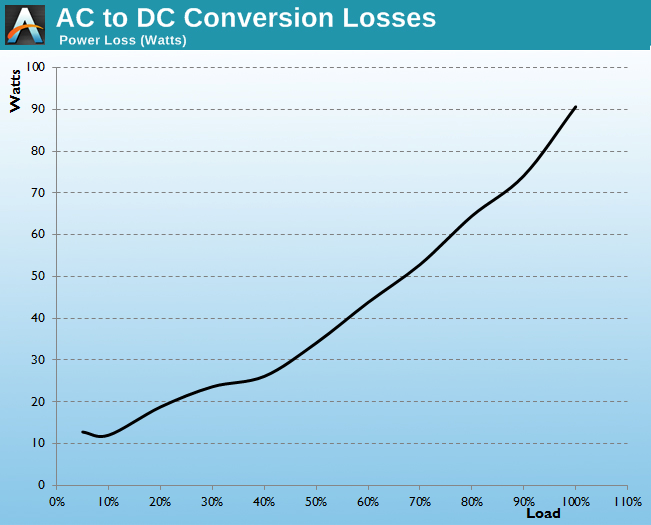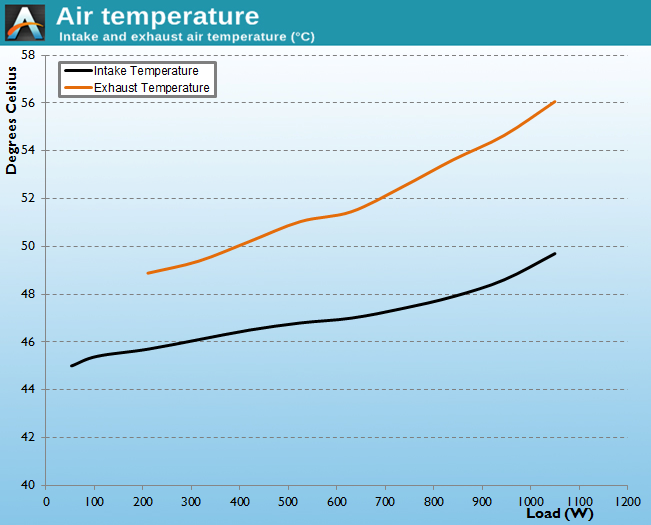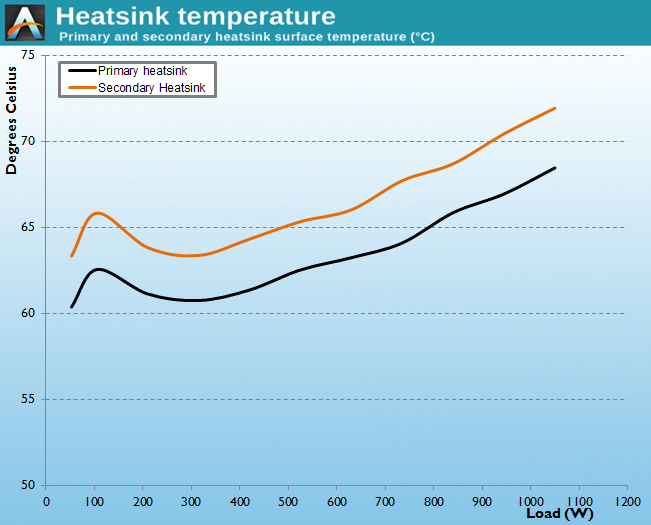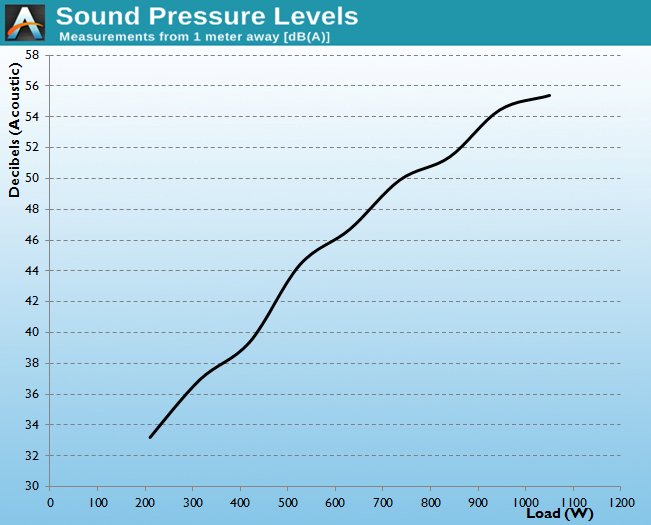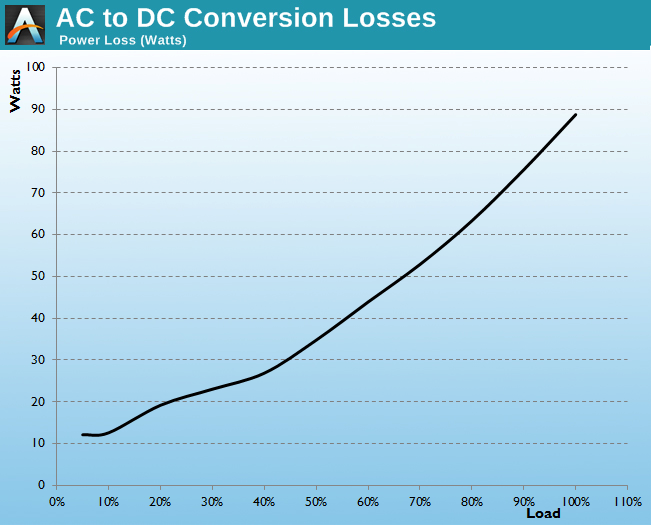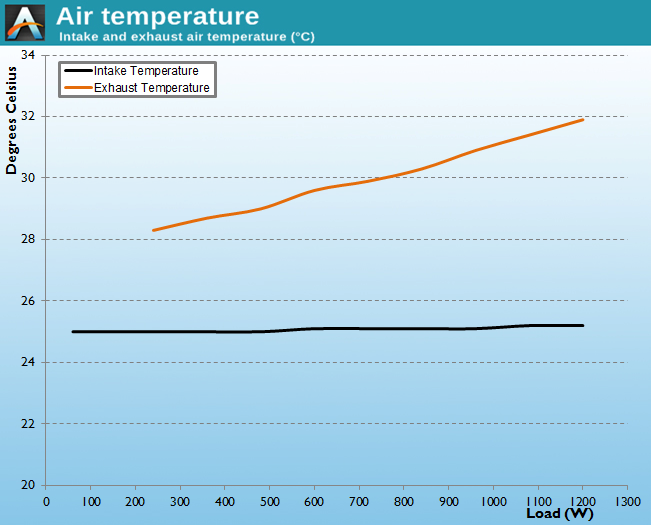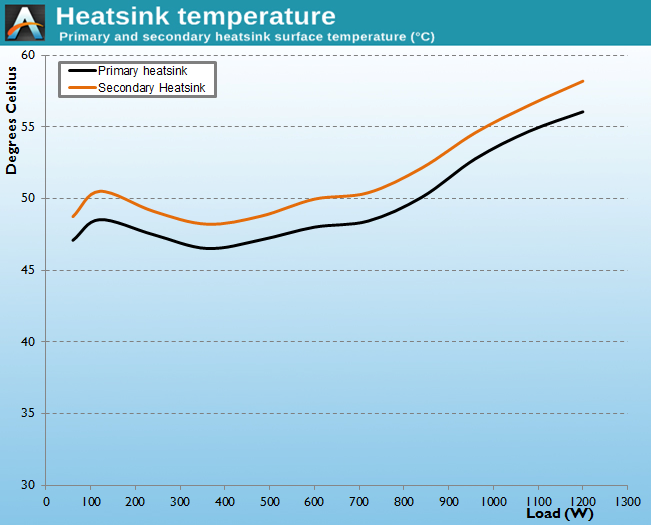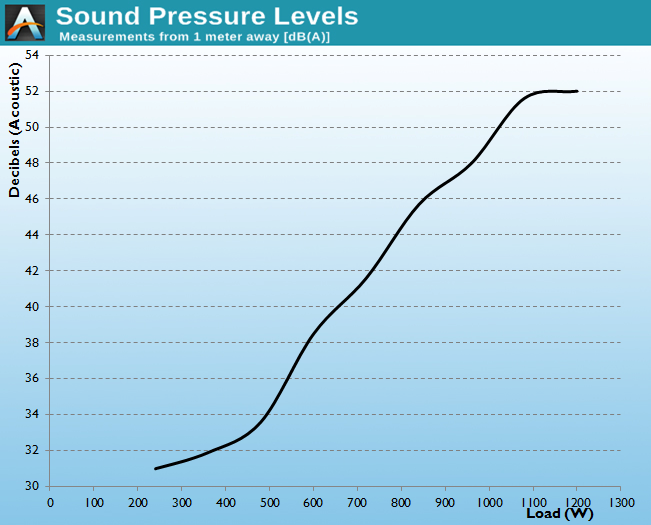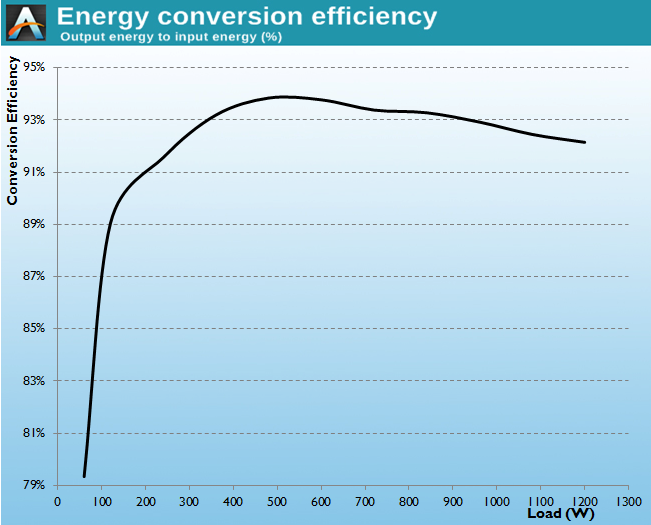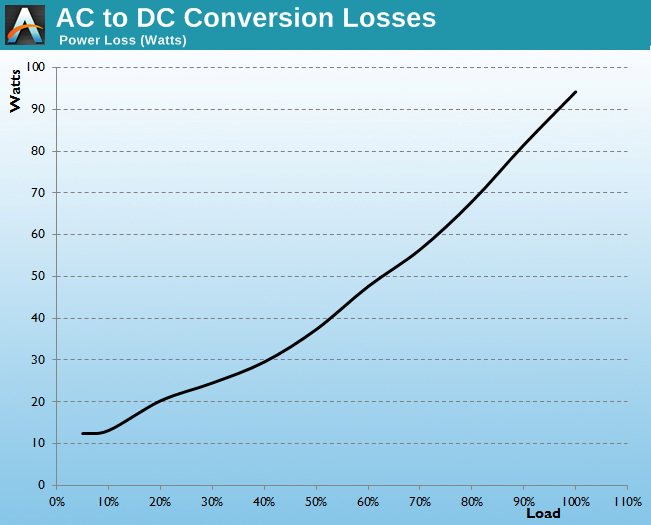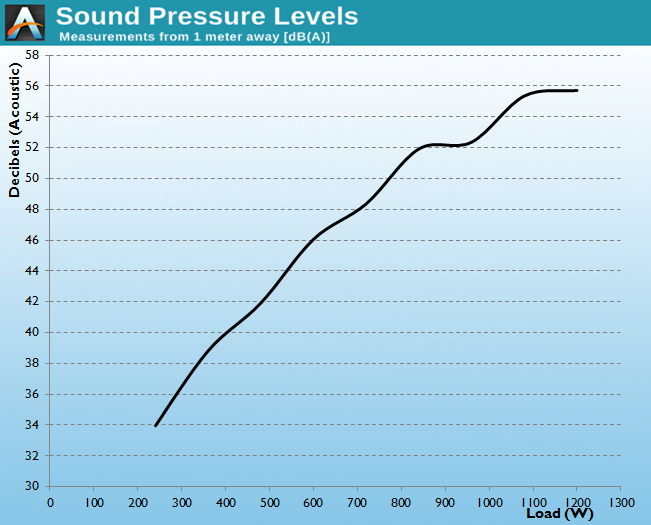
Original Link: https://www.anandtech.com/show/8461/seasonic-platinum-ss1050xp3-ss1200xp3-power-supply-review
Seasonic Platinum SS-1050XP3 & SS-1200XP3 Power Supply Review
by E. Fylladitakis on September 3, 2014 6:00 PM EST- Posted in
- Seasonic
- 1200W
- Cases/Cooling/PSUs
- 80Plus Platinum
- 1050W
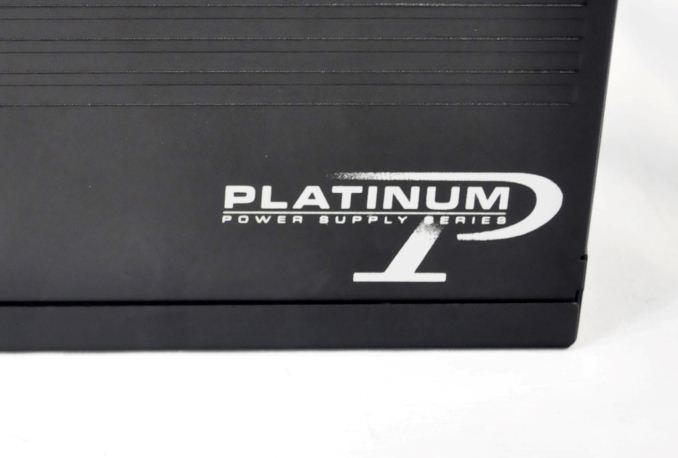
Introduction
The 80 Plus program was introduced a decade ago with the aim of promoting the development of more efficient and environmentally friendly computer PSUs. Since then, it has undoubtedly become one of the favorite subjects of PSU marketing teams. Not long ago, an 80 Plus Bronze certification was more than adequate for a mainstream product, with 80 Plus Gold certifications reserved for premium product ranges. Today, 80 Plus Gold certified units can be found retailing at very reasonable prices, slowly but surely making the 80 Plus Bronze certification fit only for low-range products.
There also are numerous 80 Plus Platinum certified products available and even a few 80 Plus Titanium certified units, such as the Corsair AX1500i, are making their appearance, albeit their ludicrous price tags. Meanwhile, the pricing of 80 Plus Platinum certified PSUs has become more reasonable, allowing the manufacturers to effectively implement the technology in their medium and high-end units. Today we have a couple more 80 Plus Platinum PSUs on our test bench.
Seasonic is a very well-known manufacturer of high quality PSUs, so they hardly need an introduction. Today, we are going to look at two of the new additions to their Platinum series, the Platinum SS-1050XP3 1050W and the Platinum SS-1200XP3 1200W. The name of the series is obviously linked with the 80 Plus Platinum efficiency certification of the units and it is their top-tier series, so these two new models also are the best consumer-grade PSUs that Seasonic currently offers. The 1050W and 1200W versions currently retail for $230 and $250 respectively, which are fairly reasonable prices considering their class and power output. How well can they perform though? We will find out in this review.
| Platinum SS-1050XP3 - Power specifications ( Rated @ 50 °C ) | |||||
| AC INPUT | 100 - 240 VAC, 50 - 60 Hz | ||||
| RAIL | +3.3V | +5V | +12V | +5Vsb | -12V |
| MAX OUTPUT | 25A | 25A | 87A | 3A | 0.5A |
| 125W | 1044W | 15W | 6W | ||
| TOTAL | 1050W | ||||
| Platinum SS-1200XP3 - Power specifications ( Rated @ 50 °C ) | |||||
| AC INPUT | 100 - 240 VAC, 50 - 60 Hz | ||||
| RAIL | +3.3V | +5V | +12V | +5Vsb | -12V |
| MAX OUTPUT | 25A | 25A | 100A | 3A | 0.5A |
| 125W | 1200W | 15W | 6W | ||
| TOTAL | 1200W | ||||
Packaging and bundle
We received both units in a long, very well designed cardboard box, with an elegant brushed metal color theme and reflective lettering. Inside the thick cardboard walls of the box, the unit is protected by Polyethylene foam pieces and is wrapped inside a synthetic cloth pouch, which can be repurposed. Information on the performance and the features of the unit can be found on the back of the box.
Both units share the same bundle, consisting of a well written manual, a case badge, four typical 3M mounting screws, a few cable ties, and six cable straps. We imagine that many enthusiasts would prefer black screws instead, but that is a minor misstep.
Both units share almost the same set of cables as well, with the exception that the 1200W version offers ten 6+2 pin PCI-E connectors instead of eight. The cables come supplied in a dual compartment nylon bag with the series logo printed on both sides. With the exception of the 24-pin ATX cable, all of the cables are flat, ribbon-like cables with no sleeving. The 24-pin ATX cables uses black wires as well, but they are individual wires and are covered with black sleeving.
External Appearance
Externally, both units are nearly identical, with the sole exception being the sticker with the specifications table on the left side of the chassis. The 190mm long chassis will most likely be too long for small cases, but these units are definitely not designed for compact systems. Seasonic's designs usually are subtle but the company has performed several modifications to enhance the aesthetic value of their top-tier units.
The circular fan guard has been replaced with a rectangular grey panel, with a honeycomb mesh pattern and a badge with the company logo on it. Seasonic added decorative engravings and printed the company and series logos on the right side of the chassis, where they will most likely be invisible, as they will be facing the right side panel of most cases. For these engravings to be visible from a windowed left side panel, the PSU will have to be installed with the fan facing upwards. If the fan is facing downwards, the decorations will also be upside down, so they are best left out of sight. On the left side of the chassis, the side that is visible from windowed side panels, Seasonic placed a sticker with the specifications of the PSU.
A typical C14 receptacle can be seen at the perforated rear side of the units, next to a large on/off switch. The front of the units is filled with connectors for the modular cables and there also is a switch that can change the fan's profile from normal to hybrid mode. The hybrid mode is a quieter thermal profile and allows the fan to be turned off entirely when it's not necessary. Finally, the company and series logos are printed here as well.
Internal Design
Seasonic went with a San Ace 9S1212H403 120mm fan in both of their newest models. It is a very powerful fan, with a top rated speed of 2700RPM. The specifications of the bearing/engine are not available from the manufacturer, but it looks like Sanyo uses a form of self-lubricating sleeve bearing. The life expectancy of this fan is 40,000 hours, a rather mediocre rating for similar devices, but it also translates to about 4.5 years of 24/7 use at 60°C, albeit this rating also is for a free, unobstructed air path (zero static pressure, max airflow).
Seasonic designs and builds their own units so there is no secondary / hidden OEM behind their Platinum series; these PSUs are entirely in-house productions. Both units share the exact same platform and design, with the obvious difference being only the ratings of both the passive and active components. For example, the 1050W version has three Nippon Chemi-Con 330μF capacitors at the PFC stage, whereas the 1200W version has three 390μF capacitors of the same type installed there. Aside from the component ratings however, the two versions do not have a discernible design difference.
The filtering components at the back of the AC receptacle are shielded in an effort to reduce EMI. The total number of filtering components is six Y capacitors, four X capacitors, and three filtering inductors, more than adequate for a strong filtering stage, even for units of this size. Moving towards the APFC stage, we can see the two bridge rectifiers on their own small heatsink, followed by a sizable APFC coil and three capacitors from Nippon Chemi-Con.
The active PFC components are on the long heatsink near the edge of the PCB, while the smaller heatsink towards the center of the unit holds the four transistors that form the full-bridge inversion stage. Two square heatsinks cool the active components of the secondary conversion stage, which are not directly attached to the heatsinks but are on the rear of the PCB. Nippon Chemi-Con supplies all of the secondary side capacitors as well, electrolytic and solid alike, making these units an all-Japanese affair.
When it comes to build quality, Seasonic has an excellent reputation for designing and building top-quality products; these two units however surprised us. Seasonic is definitely using top-tier components, some of the best that can be found in a consumer-grade product. The soldering job is excellent as well and we could not find a single bad joint or weak point. What confounded us however is that the assembly of the Platinum units is rather messy, which is a first for Seasonic.
It is not bad, not even average, but it does not live up to the standards Seasonic themselves have set. There are cables pressing against components and many electrolytic capacitors appear to have received mechanical force after they have been soldered on the board, tilting them left and right. Even the glue appears to have been spilt carelessly and purposelessly, as there are spots where it does not even touch the components it is supposed to. If this was true for just one sample, we could consider the possibility of it being an "isolated case", but both of the samples that we received share these flaws, so it is not random. Perhaps these are just pre-production or early samples, and we hope so, but we've seen better attention to detail in previous Seasonic units.
Seasonic Platinum SS-1050XP3 Cold Test Results
For the testing of PSUs, we are using high precision electronic loads with a maximum power draw of 2700 Watts, a Rigol DS5042M 40 MHz oscilloscope, an Extech 380803 power analyzer, two high precision UNI-T UT-325 digital thermometers, an Extech HD600 SPL meter, a self-designed hotbox, and various other bits and parts. For a thorough explanation of our testing methodology and more details on our equipment, please refer to our How We Test PSUs - 2014 Pipeline post.
As expected, the Seasonic Platinum SS-1050XP3 delivers excellent energy conversion efficiency at room temperature, reaching an average conversion efficiency within the nominal load range (20% to 100%) of 93.1%. With a conversion efficiency of 94.2% at 50% load, it covers the 80 Plus Platinum requirements, yet the maximum conversion efficiency is 94.3% and appears at 40% load. At just 5% load, the efficiency takes a dive to just 76.1%. While this is natural for a switching PSU, the efficiency climbs at an extraordinary rate, reaching 89.2% at just 10% load. This makes the Seasonic Platinum SS-1050XP3 the first unit that we have seen to date with lower losses after doubling its power output from 53 to 105 Watts.
Despite the very high energy conversion efficiency, it appears that Seasonic designed the Platinum SS-1050XP3 with thermal performance in mind, not silent operation. Even with the fan in hybrid mode and at room temperature, the fan starts at 30% load, while the temperature of the PSU is still relatively low. This has a very positive impact on the thermal performance of the PSU, which maintains a very low operating temperature even at maximum load. On the other hand, the 120mm fan can be clearly heard at just 40% load and its speed climbs rapidly as the load increases, surpassing even 50dB(A) at very high loads. At such noise levels, the Platinum SS-1050XP3 can be clearly heard from rooms away.
Seasonic Platinum SS-1050XP3 Hot Test Results
From the tables below, we can see that the output power quality of the Seasonic Platinum SS-1050XP3 is excellent. Our instrumentation recorded a maximum ripple of 42mV on the 12V line under maximum load, a very good performance figure considering the 73 Amperes current. Voltage regulation is excellent, at 0.85%, 0.92% and 1.4% for the 3.3V, 5V and 12V lines, respectively; this is well within the very strict advertised limits of just 1% for the 3.3V/5V lines and 2% for the 12V line. Cross loading the lines has little effect on the stability of the PSU, which maintains very good output power quality.
| Main Output | ||||||||
| Load (Watts) | 213.19 W | 532.43 W | 789.96 W | 1052.35 W | ||||
| Load (Percent) | 20.3% | 50.71% | 75.23% | 100.22% | ||||
| Line | Amperes | Volts | Amperes | Volts | Amperes | Volts | Amperes | Volts |
| 3.3 V | 4.19 | 3.42 | 10.49 | 3.41 | 15.73 | 3.4 | 20.97 | 3.4 |
| 5 V | 4.19 | 5.16 | 10.49 | 5.14 | 15.73 | 5.13 | 20.97 | 5.12 |
| 12 V | 14.6 | 12.14 | 36.5 | 12.13 | 54.74 | 11.98 | 72.99 | 11.97 |
| Line |
Regulation (20% to 100% load) |
Voltage Ripple (mV) | |||||
| 20% Load | 50% Load | 75% Load | 100% Load |
CL1 12V |
CL2 3.3V + 5V |
||
| 3.3V | 0.86% | 14 | 16 | 20 | 22 | 16 | 26 |
| 5V | 0.92% | 12 | 18 | 22 | 26 | 20 | 26 |
| 12V | 1.4% | 16 | 24 | 30 | 42 | 40 | 16 |
The impact of high ambient temperature on the efficiency and performance of the Seasonic Platinum SS-1050XP3 is small but discernible. The average nominal load (20-100%) efficiency is reduced down to 92.5% and the maximum efficiency drops down to 93.8% at 40% load. The overall efficiency drop is only 0.6% percent for a temperature rise of >20°C, a figure that seems small but it brings efficiency of the Seasonic Platinum SS-1050XP3 below 80 Plus Platinum levels. However, remember that the 80 Plus certification dictates an ambient temperature of 25°C, not >40°C.
The behavior of the cooling system remains similar with the PSU inside our hot box, with the exception that the fan is even more aggressive, starting at just 20% load and with its speed climbing rapidly as the load increases. At 50% load, under such conditions, the Seasonic Platinum SS-1050XP3 already is a loud PSU, with the sound pressure reaching ear-splitting levels at >80% load. On the other hand, the Seasonic Platinum SS-1050XP3 also maintains extremely low operating temperatures for a >1kW PSU.
Seasonic Platinum SS-1200XP3 Cold Test Results
This is a repeat (in case you skipped page three), but for the testing of PSUs, we use high precision electronic loads with a maximum power draw of 2700 Watts, a Rigol DS5042M 40 MHz oscilloscope, an Extech 380803 power analyzer, two high precision UNI-T UT-325 digital thermometers, an Extech HD600 SPL meter, a self-designed hotbox, and various other bits and parts. For a thorough explanation of our testing methodology and more details on our equipment, please refer to our How We Test PSUs - 2014 Pipeline post.
The energy conversion efficiency of the Seasonic Platinum SS-1200XP3 is, unexpectedly, noticeably better than that of its 1050W sibling. Once again, the maximum conversion efficiency manifests at 40% load (94.4%), with an average conversion efficiency within the nominal load range (20% to 100%) of 93.4%. From the chart, we can see that the Platinum SS-1200XP3 easily surpasses the 80 Plus Platinum efficiency requirements during our testing. At 10% load, the efficiency drop to 89.5% is very small, but at just 5% load it drops to 79.8%. Obviously using a 1200W PSU to drive a 60W load on a regular basis would be rather odd, so in most use cases the efficiency will be much higher.
Much like its less powerful sibling, the cooling profile of the Seasonic Platinum SS-1200XP3 is very aggressive, even with the fan set to hybrid mode. Even at room temperature, the fan starts at just 20% load. This time however, the Platinum SS-1200XP3 maintains very low noise levels up to 40% load, taking advantage of its very high efficiency. As the load increases above 50%, the speed of the fan increases radically, turning the silent 80 Plus Platinum certified unit into a hoover in no time at all. The operating temperature is very low, with the heatsinks hardly surpassing 55°C at maximum load, increasing the long-term reliability of the unit.
Seasonic Platinum SS-1200XP3 Hot Test Results
Surprisingly, even though they are both based on the exact same platform, the power quality of the Seasonic Platinum SS-1200XP3 is better than that of the less powerful 1050W model. It is not a very large difference, but it is evident. Whether this is true of all the 1200W models vs. the 1050W models is impossible to say, as there is always some small variance between individual units, but it is interesting to note nonetheless. The maximum voltage ripple that our instrumentation recorded is 40mV under maximum load, while siphoning 85.26 Amperes from the 12V line. Voltage regulation is a little better as well, at 0.71%, 0.82% and 0.95% for the 3.3V, 5V and 12V lines, respectively.
| Main Output | ||||||||
| Load (Watts) | 242.86 W | 604.83 W | 905.43 W | 1202.76 W | ||||
| Load (Percent) | 20.24% | 50.4% | 75.45% | 100.23% | ||||
| Line | Amperes | Volts | Amperes | Volts | Amperes | Volts | Amperes | Volts |
| 3.3 V | 4.26 | 3.36 | 10.66 | 3.35 | 15.99 | 3.33 | 21.31 | 3.33 |
| 5 V | 4.26 | 5.1 | 10.66 | 5.08 | 15.99 | 5.07 | 21.31 | 5.06 |
| 12 V | 17.05 | 12.13 | 42.63 | 12.08 | 63.94 | 12.06 | 85.26 | 12.01 |
| Line |
Regulation (20% to 100% load) |
Voltage Ripple (mV) | |||||
| 20% Load | 50% Load | 75% Load | 100% Load |
CL1 12V |
CL2 3.3V + 5V |
||
| 3.3V | 0.7% | 14 | 16 | 18 | 18 | 14 | 20 |
| 5V | 0.82% | 14 | 18 | 22 | 24 | 16 | 24 |
| 12V | 0.95% | 16 | 26 | 32 | 40 | 36 | 18 |
High ambient temperature has a discernible impact on the efficiency and performance of the Seasonic Platinum SS-1200XP3 as well, but not as large an impact as it did with the 1050W model. The average nominal load (20-100%) efficiency is reduced by 0.4%, with the maximum efficiency being 93.8% at 50% load. Apparently, the higher ratings of the components used to create the Platinum SS-1200XP3 are a bit more resilient to heat than those of the 1050W model.
The thermal and noise test results of the Seasonic Platinum SS-1200XP3 inside our hotbox were unsurprising, displaying similar behavior to that of the 1050W model. The cooling fan once again starts at 20% load but this time the Platinum SS-1200XP3 does not remain silent for long, as the cooling system reacts aggressively to the increasing temperatures, rapidly increasing the speed of the fan. This way the Platinum SS-1200XP3 maintains very low operating temperatures for a 1200W unit, effectively increasing its long-term reliability, but it sacrifices acoustic comfort in the process.
Conclusion
Seasonic is one of the oldest PSU manufacturers and they are a very experienced company. There is no randomness about the products they design; each and every one of them serves an exact and specific purpose. This is also true for their two latest additions to the Platinum series that we have tested here today. With the power requirements of typical computers in constant decline, it is known that such powerful units have a very limited target audience.
Both of the units that we tested here today share the same external and internal design, with the only difference being the ratings of some components. Externally, the understated appearance and fully modular design will be appreciated by users. The design of the sides is a little tricky, as whether the user will be seeing a sticker with electrical specifications or decorative engravings depends on whether the PSU will be installed with the fan facing downwards or upwards.
Internally, we found an advanced full-bridge topology platform, components of the highest quality and an immaculate soldering job. The assembly job confounded us somewhat, as it is rather messy and we were surprised to see such a thing in a Seasonic product, but it should not really affect the performance or reliability of the PSUs. Besides, Seasonic covers these units with a seven year warranty, removing any concerns that we could express about the longevity of these units.
What both of the new Seasonic Platinum units really excel at is electrical performance. Both units displayed excellent energy conversion efficiency and outstanding power output quality, with the Platinum SS-1200XP3 slightly outpacing the Platinum SS-1050XP3. It appears that the more powerful components of the 1200W version give it a slight performance edge as well, despite the identical platform. They also maintain very low operating temperatures, even when heavily loaded and in adverse environments, yet at the expense of acoustic comfort. However, we do believe that very few users actually require their system to remain silent while it is heavily loaded.
The majority of the users that actually have to buy a >1kW PSU are either hardcore gamers or cryptocurrency miners. What hardcore gamers want is ample and clean power for their multi-GPU gaming system, ensuring its stability. Gamers also often seek good aesthetics, as their systems frequently include cases with windowed side panels. A gaming system requires very high power when loaded but just a small portion of it while performing simple everyday tasks. With the cooling profile that Seasonic's Platinum series has, the units will be quiet while the system is idling, discernable only when it is heavily loaded (i.e. while the gamer is actually gaming), and thus it is unlikely that any environmental noise will overcome the sound from the speakers or headphones.
Cryptocurrency miners on the other hand simply require highly efficient units that can sustain a continuous heavy load. Energy conversion efficiency is required for obvious reasons; when such a system is working 24/7, energy losses are important both financially and practically, as they cost the user money and heat up the unit, reducing its lifetime and performance. Seasonic's Platinum series units however have aggressive cooling profiles that will keep their operating temperature very low, even while the PSU is heavily loaded. Their efficiency at high loads is excellent as well, surpassing 92%. The seven year manufacturer warranty is the cherry on top for users that plan on running cryptocurrency mining rigs with these units, and likely the other components of the system will fail long before the PSU gives out. The high speed of the fan will definitely make these units loud under such conditions, but that is of little importance for cryptocurrency mining rigs.
The Seasonic Platinum SS-1050XP3 currently retails for $230 and the 1200W Platinum SS-1200XP3 can be purchased for just $20 more at the time of this review. Considering the small price difference and the slightly better performance, the 1200W version potentially offers a better value, though if the pricing gap widens, the 1050W version may become more appealing. As far as competition goes, Seasonic's new units are considerably cheaper than most of the competitive products. The Platinum SS-1200XP3 is $50 cheaper than Corsair's AXi series (e.g. $300 after rebate for the 1200W version), but it's simpler and without Corsair's Link interface. It's also cheaper than Cooler Master's V1200 Platinum ($300 as well, though it's only $252 on Amazon), with the only actual competition coming from the Leadex-based EVGA Supernova P2 1200W ($232 at the time of this review).
Ultimately, the number of use cases for 1kW and higher PSUs is rather limited. For cryptocurrency mining rigs, the good price and specific performance profile of the Seasonic Platinum units makes them an excellent choice. Of course, GPU mining has become generally unprofitable at this stage, so buying a new $200+ PSU could take the better part of a year to break even. Gamers on the other hand will have to consider other factors as they decide whether the Seasonic Platinum units can fully cover their needs or if they require the features and/or different performance profile of another model. Seasonic delivers high quality PSUs with their XP3 series, and does so at reasonable prices, so if you're in the market for such a power supply they're worth a look.

